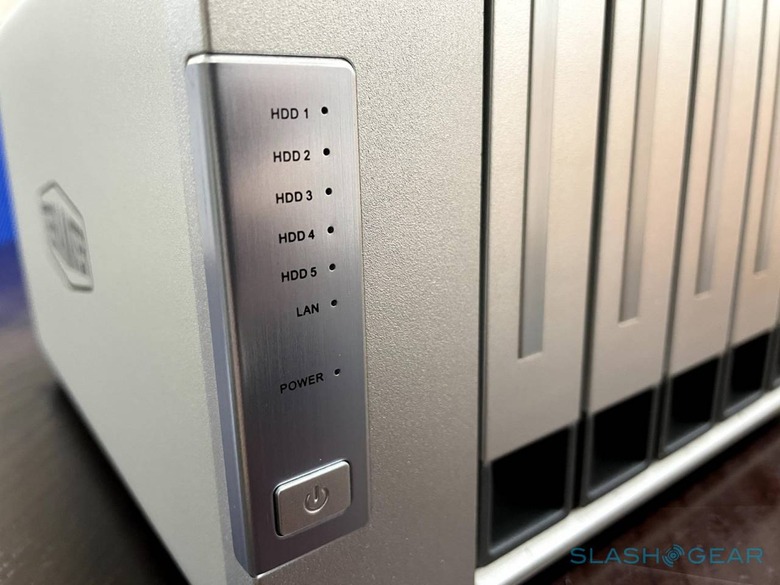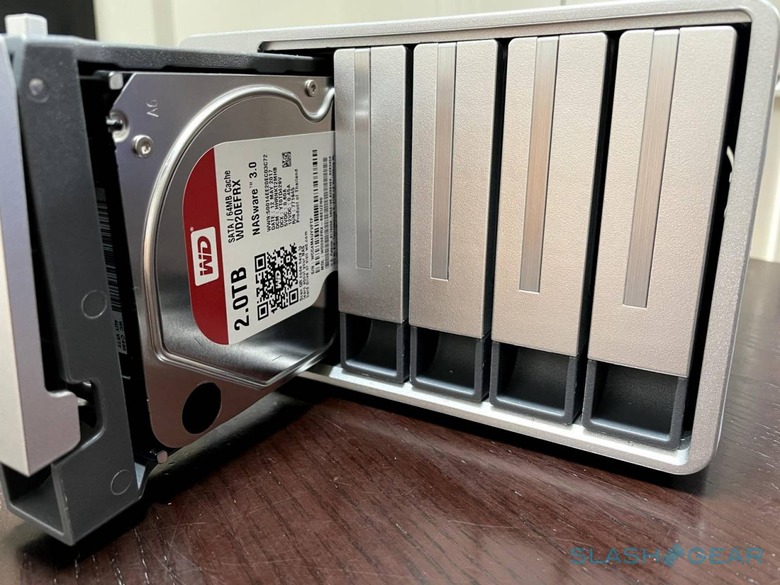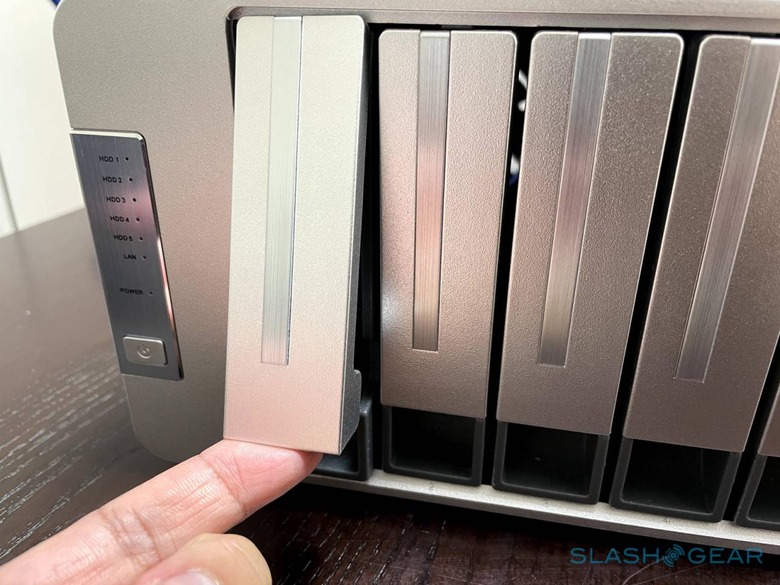TerraMaster F5-422 NAS Review
- 5 drive bays
- 10Gb Ethernet Port
- Simple setup process
- Multiple RAID levels, filesystems
- LAN network aggregation, failover
- No separate SSD cache option
- No USB port in front
- Relatively fewer apps
The past few months have seen many office work and processes move into homes because of the ongoing pandemic. Even before that, however, the volume of content we produce and consume even at home has made conventional storage solutions, like the HDDs and SSDs in desktops and laptops, no longer adequate. Modern work and lifestyles have given rise to smaller and more affordable Network-Attached Storage or NAS products targeting homes, whether for work or personal use. The TerraMaster F5-422 is one such NAS and we take a good look at what it delivers to your setup at home.
Design
The design of the TerraMaster F5-422 is simple, to the point, and utilitarian. It offers the bare minimum to be useful and nothing more. The front, for example, just has the five drive bays for easy swapping of storage. There is a minimalist panel off to the side for LEDs that show the state of the drives as well as the network and a single power button, nothing more, nothing less.
The back hides much of the busy-ness that actually goes on inside a NAS. There are two large fans that will keep things cool, though the TerraMaster F5-422 doesn't really get that hot anyway. The Ethernet and USB ports are all there as well, something we'll revisit again later.
Curiously, TerraMaster removed the HDMI port that was present in older models since that couldn't be used anyway due to lack of support from the software.

Drives and Performance
The meat of a NAS is, of course, the different use cases for data storage that it supports. There are five drive bays that can support up to 16TB each for a total of 80TB. It supports multiple file system formats, including NTFS and HFS+. There is also no shortage of RAID types supported, including RAID 0, RAID 1, RAID 5, RAID 6, RAID 10, JBOD, or none at all.
Measuring the throughput of such a NAS can be tricky as the final figures will depend a lot on the type of drives used, the type of RAID, encryption, network speed, and actual task running. The TerraMaster F5-422 is built with 4K transcoding in mind and the company advertises an average 670 MB/s read-write speeds for that use case.
In practice and in some operations like file transfer, the NAS does a decent job but fares just behind the likes of Synology, though those often come with higher prices.

It should be noted that the TerraMaster F5-422 doesn't provide a way to use an SSD cache without using up one of the drive bays reserved for storage, like a dedicated M.2 SSD slot. This is rather disappointing since the NAS greatly benefits from the 10GbE connection by having a high-speed cache.
The only memory that is upgradeable is RAM, where you can add 4GB to the already soldered 4GB for a total of 8GB of memory.
Connectivity
The TerraMaster F5-422 doesn't exactly have that many connection options but the ones that it does have are good enough. The star is, of course, the 10 Gigabit RJ-45 Ethernet port for fast network performance, presuming, of course, you have a router or switch to take advantage of that.
The two Gigabit RJ-45 ports, however, do have their own special talent. They support network aggregation, provided you have the necessary switch to support that. Even without that, however, failover protection means you won't suddenly lose all network connection should one of those ports breaks.

There are three USB 3.0 ports there as well for everything else and the lack of a USB-C port hints at the age of this product. Nonetheless, the biggest downside here is there is no USB port in the front, making it more cumbersome to reach back to connect and remove peripherals.
Setup and Software
Just like its appearance, the TerraMaster F5-422 is designed to be simple to set up and use. The drive sleds are easy to remove and put back in but, unfortunately, you will need a screwdriver, which is included in the box, to mount 2.5-inch or 3.5-inch drives. A tool-less system would have been ideal but TerraMaster seems to have preferred simplicity over convenient sophistication.
Setting up the NAS involves going to the Web to follow a guide and install the Linux-based TerraMaster OS on it. Controlling the NAS requires the TNAS app which, on the desktop, is really a web app. This presents a desktop-like UI common among all NAS operating systems, with different settings and aspects of the device presented as separate apps. You can even set up remote access if you need to get to your files while not at home.

This is sadly where TerraMaster seems to have progressed only very slowly. While TOS itself provides most of the basic functions you need, like many NAS products it relies on apps for added use cases. Although not exactly paltry, TerraMaster's list of apps is noticeably shorter than its competitors.
Wrap-up
Just like Internet requirements, data storage at home, whether for personal use or work, has become more complicated in the past years and especially in recent months. Although you don't need to run a data center at home, it often pays to invest in dedicated hardware for storing, processing, and transferring important files.
The investment doesn't really need to cost you any appendage and with a decent set of features, the $599.99 TerraMaster F5-422 remains one of the more well-balanced options out there.
